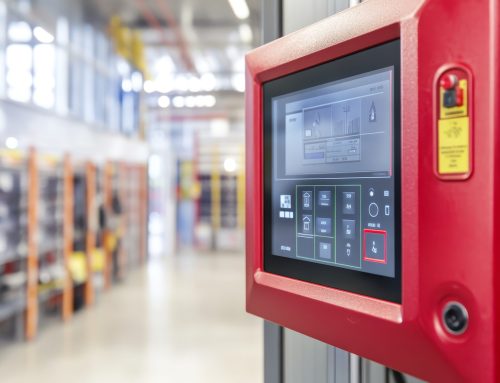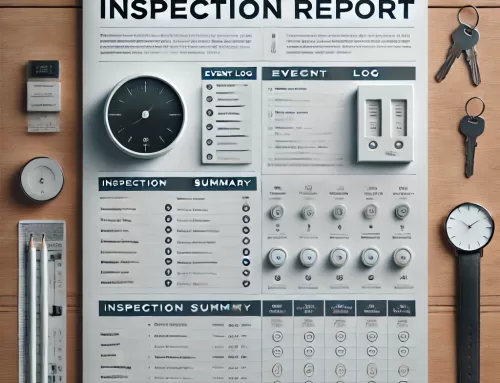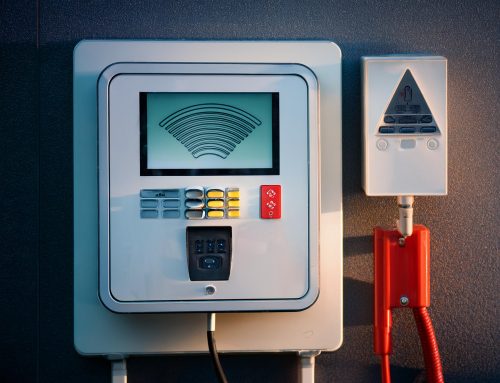Not all smoke detectors function the same way, and different environments require different types of detectors for optimal safety. Explore the different types of smoke detectors, including duct detectors, smoke detectors, heat detectors, and other specialized devices, to better understand how each is inspected to ensure proper functionality.
Understanding the Different Types of Smoke Detectors
Smoke detectors are a crucial part of any fire protection system, offering the first line of defense in detecting a fire and alerting occupants. Understanding their differences can help you select the most suitable devices for your specific environment.
First, consider the factors that impact what type of detectors you’ll need. The type of detector you need depends on factors like the nature of the space, potential fire risks, and the speed at which a fire might spread. For instance, some detectors excel at identifying smoldering fires with heavy smoke, while others are designed for detecting fast-flaming fires that produce little smoke.
Ionization Smoke Detectors
Ionization smoke detectors are highly sensitive to fast-burning fires that produce minimal visible smoke. These detectors use a small amount of radioactive material to ionize the air within the detector’s chamber. When smoke enters the chamber, it disrupts the ionization process, triggering an alarm.
Inspection: Regular inspections involve testing the sensor’s response using a testing aerosol designed to simulate smoke. Battery-operated models require checking and replacing batteries periodically.
Photoelectric Smoke Detectors
Photoelectric smoke detectors are ideal at detecting smoldering fires that produce a lot of visible smoke. These devices use a light source and a sensor; when smoke particles scatter the light, the sensor detects the disturbance and activates the alarm.
Inspection: Inspections for photoelectric detectors include cleaning the sensor area to remove dust or debris and testing functionality with a testing aerosol.
Combination Smoke Detectors
Combination smoke detectors integrate both ionization and photoelectric technologies, offering comprehensive protection against both fast-burning and smoldering fires.
Inspection: Inspections for combination detectors involve the same procedures as for ionization and photoelectric detectors, ensuring both mechanisms function correctly.
Specialized Smoke Detection Devices
Beyond standard smoke detectors, specialized devices are designed to address unique fire detection challenges in complex environments.
These advanced detectors, such as duct smoke detectors, heat detectors, and aspirating smoke detectors, serve specific purposes that enhance a building’s overall fire safety. For example, duct smoke detectors are critical for HVAC systems, preventing smoke from spreading through air ducts. Heat detectors, on the other hand, are ideal for high-risk areas like kitchens or industrial spaces where traditional smoke detectors may trigger false alarms.
These specialized devices play a vital role in protecting complex and high-risk areas, ensuring every part of your building is adequately monitored for fire threats.
Duct Smoke Detectors
Duct smoke detectors are installed within HVAC systems to detect smoke traveling through air ducts. These detectors help prevent the spread of smoke throughout a building, which is crucial for maintaining air quality and fire safety.
Inspection: Inspecting duct smoke detectors involves cleaning the sampling tubes to prevent blockages, testing the detector with smoke aerosol to ensure it can sense smoke traveling through the duct, and checking connections to the fire alarm control panel for proper integration.
Heat Detectors
Heat detectors activate based on temperature changes rather than smoke. They are ideal for environments where smoke detectors may trigger false alarms, such as kitchens or industrial spaces. Heat detectors come in two main types:
- Fixed-Temperature Heat Detectors: Trigger an alarm when the temperature exceeds a preset threshold.
- Rate-of-Rise Heat Detectors: Activate when the temperature rises rapidly over a short period.
Inspection: Heat detectors require testing with specialized equipment that applies heat to the detector to confirm its response. Regular maintenance includes verifying temperature settings and ensuring no obstructions block heat detection.
Aspirating Smoke Detectors (ASD)
ASD systems continuously draw air samples through a network of pipes to detect smoke particles. These highly sensitive detectors are often used in environments like data centers and museums where early detection is critical.
Inspection: ASD systems are inspected by testing the air sampling network for blockages, using smoke or aerosol to verify the detector’s sensitivity, and confirming system calibration.
How Are Smoke Detectors Inspected?
Regular inspections are essential to ensure the functionality and reliability of all types of smoke detectors. Depending on the type of detector, the general steps involved in inspecting these devices typically include:
- Visual inspection: Technicians check for physical damage, dirt, or obstructions that might affect the detector’s performance.
- Functional testing: This involves simulating the detector’s activation conditions. For smoke detectors, technicians use smoke aerosols, while for heat detectors, they apply heat to test responsiveness.
- Connection testing: Ensuring the detector communicates correctly with the fire alarm control panel is crucial for system integration.
- Cleaning and maintenance: Detectors are cleaned to remove dust, debris, or other contaminants that could impair functionality.
- Battery and power check: Battery-operated devices are tested for sufficient power levels, and hardwired detectors are checked for proper electrical connections.
- Documentation: Inspection results are recorded, and any deficiencies are reported for repair or replacement.
Why Regular Inspections Matter
Smoke detectors are only effective if they function as intended. Regular inspections not only ensure compliance with fire safety regulations but also provide peace of mind by confirming that the system can respond promptly in an emergency. Neglecting inspections can lead to malfunctions, delayed responses, or even system failures, putting lives and property at risk.
Fire Systems, Inc.
Understanding the different types of smoke detectors—ionization, photoelectric, combination, duct detectors, heat detectors, and aspirating smoke detectors—is essential for choosing the right devices to protect your property. Regular inspections are just as important, ensuring these systems work reliably and comply with fire safety standards. Neglecting inspections can lead to system failures, delayed responses, and increased risks to lives and property.
For professional fire protection services, including the inspection and maintenance of all types of smoke detectors, Atlanta-based Fire Systems, Inc. is a trusted partner. With decades of experience, Fire Systems, Inc. offers expert inspection services, system installations, and ongoing maintenance tailored to meet the specific needs of your building or business. Their team of certified technicians ensures your fire protection systems remain in peak condition, providing you with peace of mind and full compliance with safety regulations.
Contact Fire Systems, Inc. today to schedule an inspection or learn more about their fire protection solutions. Call 770-333-7979 or visit our website at www.firesystems.net to get started on safeguarding your property and ensuring the safety of everyone inside.






